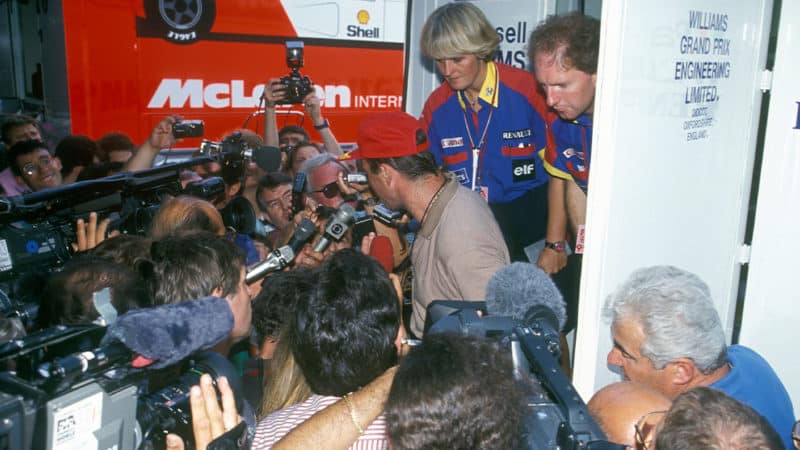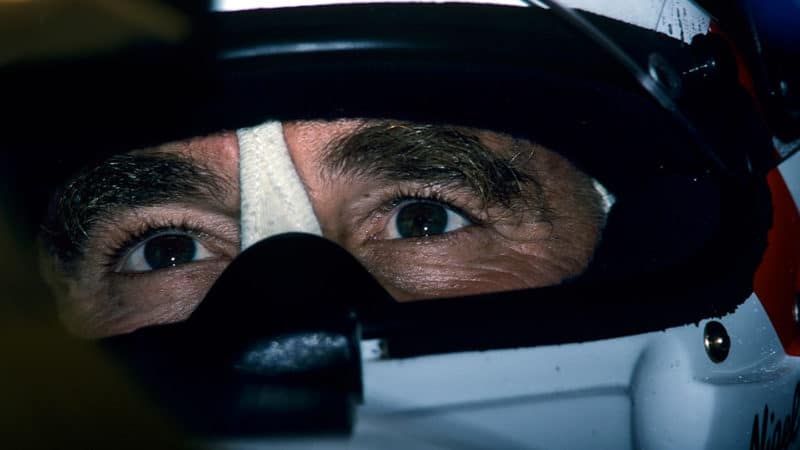Thirty years later, much has changed – a lot for the better. F1 is closer in competition than it was then and the racing is mostly more entertaining. The boorish power of the tabloids is much diminished, which is no bad thing – but it’s been replaced by the dark force that is social media, that on one hand has made F1’s stars more accessible and on the other has opened up a fast-running stream of toxic vitriol that was unthinkable in those relatively innocent days of 1992. The idiotic track invasion was alarming; the discriminatory abuse witnessed and reported among the ranks of spectator at the Red Bull Ring last weekend is something else again. What a world we live in right now. No wonder we sometimes choose the comfort of looking back to simpler times…
So was ‘Mansell Mania’ so outrageous? For the most part, not really. I was at Stowe Corner that year, not quite 18, and recall the joy and sheer fun of the unleashed patriotism among a happy crowd. I recall nothing sinister or unpleasant. Had the new influx of interest created by Mansell’s success diminished the British GP experience for the hard-core? Not from where I was standing. Eleven years earlier, as a little boy, I’d been lucky enough to witness John Watson’s landmark win and had joined the post-race track invasion at Club (with a bit of help jumping down from those high sleepers that passed for unforgiving barriers…). Tifosi-style fervour was (and still is) one of the best aspects of the British GP. Idiotic minorities never took the shine away for the happy majority – as they mustn’t now.
How Mansell himself was viewed then and today certainly remains consistent. A few weeks ago, ‘Mansell Mania’ was reborn at the Goodwood Festival of Speed, where he was mobbed just as he had been in the old days. It’s astonishing how popular he remains, particularly when he only rarely shows his face in public. Perhaps that’s why. Whatever the reason, he probably deserves more credit from us ‘media types’. But then again, that’s a complex relationship.

Mansell’s relationship with press was complicated at best
Grand Prix Photo
Back at Silverstone ’92, Mansell’s nose had been shoved out of joint by a selection of the regular motor sport writers who he judged had given too much credit for his success to his incredible Williams-Renault and not enough to the hard-trying bloke in the cockpit. Previously decent professional relationships had severely broken down, creating a schism between the public view of ‘Our Nige’ and the insider’s perspective. Lionised on one side, he was a figure of ridicule among some on the other. Then things deteriorated further as rumours gathered pace that Williams, Renault and Elf were about to pull Alain Prost back from his sabbatical for 1993, and amid tabloid fury – “Get Lost Prost”, roared The Sun – some commentators didn’t even try to hide their pleasure at how it undermined Mansell.
Consider this from our own Denis Jenkinson: “Mansell may be fast, and may win races, but no way is he the same class as Prost or Senna in driving artistry. In the world of music Simon Rattle may conduct an orchestra and produce a symphony, but Herbert von Karajan generates something entirely different; Kenny Ball may play trumpet, but Bunny Berrigan played jazz; Acker Bilk may play the clarinet, but Johnny Dodds played jazz music.


